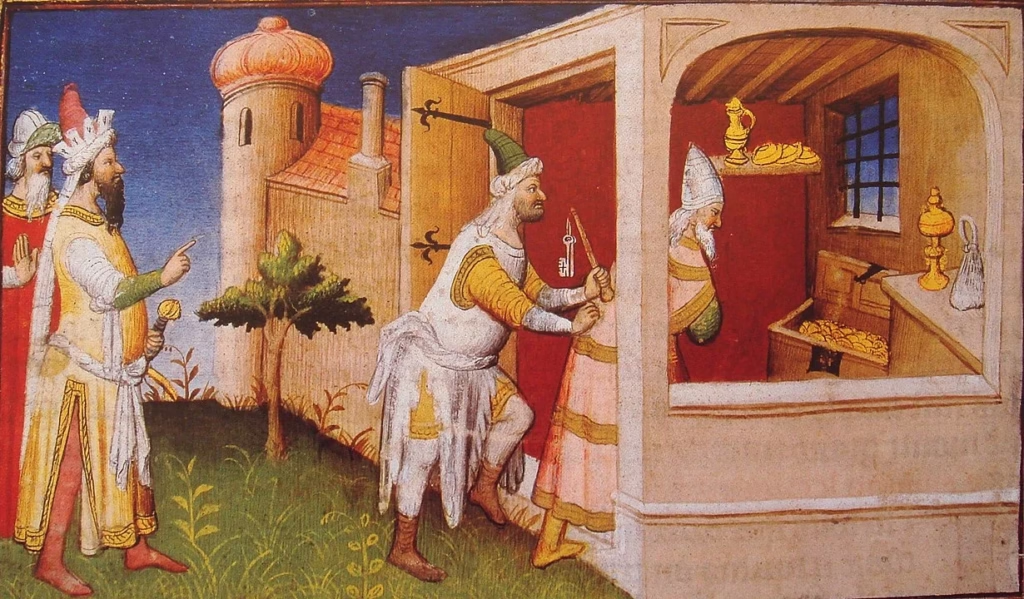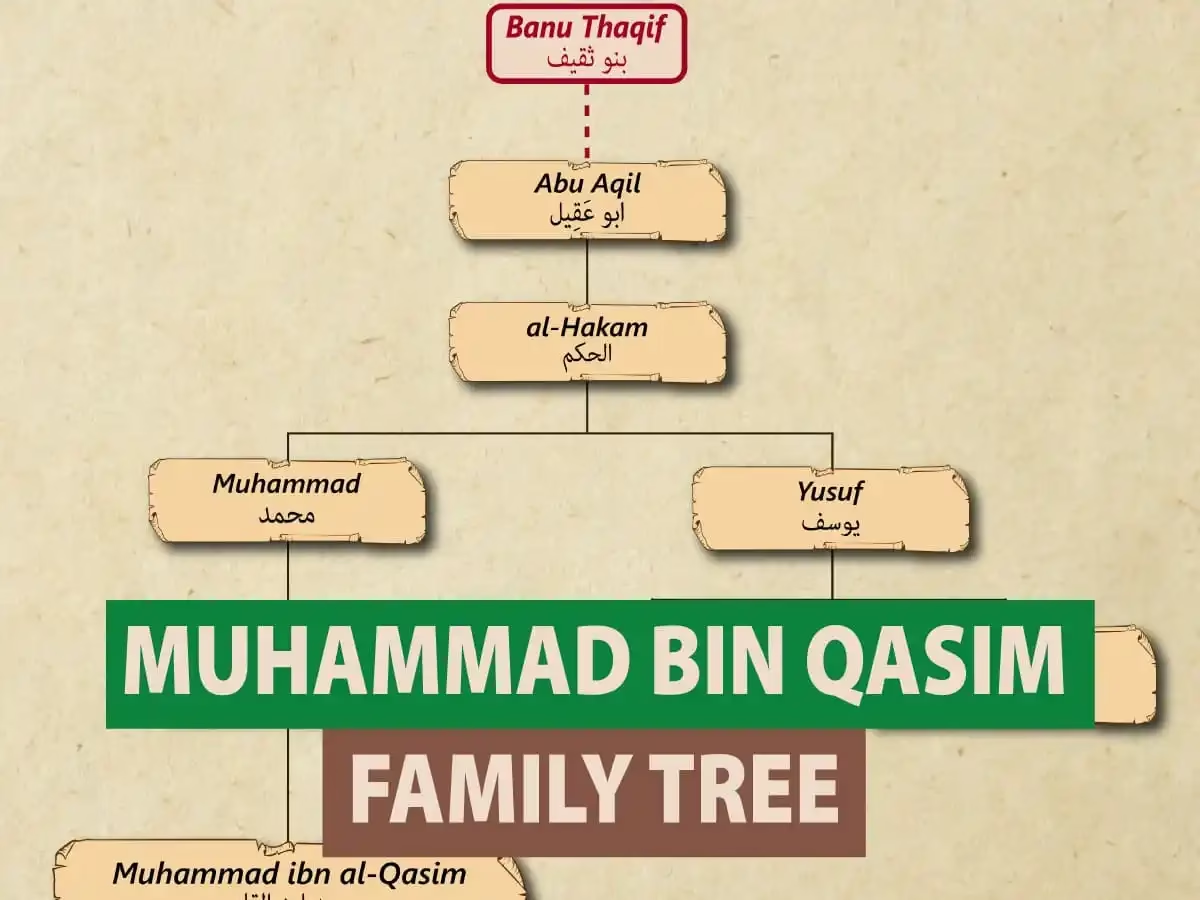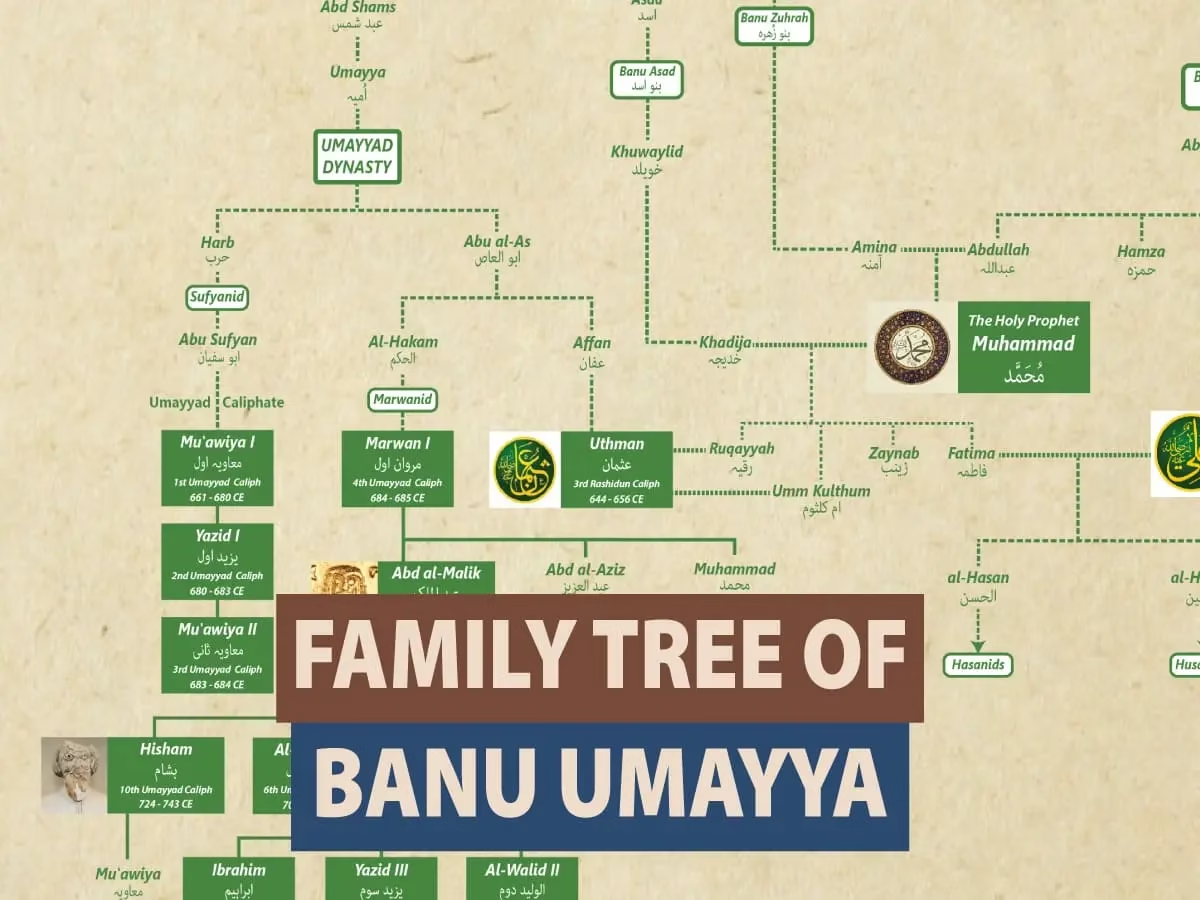The Abbasid Dynasty family tree starts with Al-Abbas, the uncle of Prophet Muhammad (PBUH), establishing the lineage that led to the Abbasid Dynasty. Al-Abbas’s descendant Muhammad is the root of the Abbasid Caliphs. The dynasty begins with As-Saffah, the first Abbasid Caliph (750-754 CE), followed by his brother Al-Mansur (754-775 CE), who solidified Abbasid power.
The line culminates with Al-Musta’sim (1242-1258 CE), the last Abbasid Caliph in Baghdad, who fell to Hulagu Khan, marking the end of the Abbasid Caliphate in Baghdad. This illustrious lineage, interconnected by generations, reflects both the height of Islamic civilization and its eventual decline amidst internal struggles and external pressures.

Founding and Lineage
The Banu Abbas was an important clan from the Quraysh tribe in Mecca, directly linked to Prophet Muhammad (PBUH) through his uncle, al-Abbas ibn Abdul Muttalib. They came to power in 750 CE after overthrowing the Umayyad Caliphate and established the Abbasid Caliphate. Their rise was supported by growing dissatisfaction with the Umayyads, as they built alliances with different Muslim groups.
See Also: Prophet Muhammad (PBUH) Family Tree: Quraysh to Imam Mahdi
Prominent Abbasid Caliphs and Achievements
• Caliph Al-Saffah
Al-Saffah, known as “the Blood-Shedder,” was the first Abbasid caliph. His rule began the Abbasid era by taking advantage of widespread resentment against the Umayyads, especially among non-Arab Muslims (mawali). To prevent the Umayyads from regaining power, he carried out a systematic purge. He also centralized authority in Kufa and started planning for the future Abbasid capital, which his successor later completed.

• Caliph Al-Mansur
Al-Mansur, who ruled from 754 to 775 CE, is considered the true founder of the Abbasid Caliphate. He was a visionary leader who built a strong political and cultural center. His greatest achievement was founding Baghdad in 762 CE, a circular city symbolizing unity and becoming a center for trade, science, and art.

Beyond city-building, Al-Mansur was a skilled strategist. He secured Abbasid rule by defeating rebellions and strengthening the economy with smart financial policies. His leadership laid the foundation for the Islamic Golden Age.
• Caliph Al-Mahdi
Al-Mahdi became caliph after his father’s death. He began his rule by freeing political prisoners, improving Mecca and Medina, and providing better facilities for Hajj pilgrims. He expanded the mail service, increased his secret service, fortified cities, and increased judicial appointments. He was also known for his generosity and charitable giving.
• Caliph Al-Hadi
al-Hadi was the fourth Arab Abbasid Caliph who succeeded his father al-Mahdi and ruled from 169 AH (785 CE) until his death in 170 AH (786 CE). His short reign ended with internal chaos and power struggles with his mother.
• Caliph Harun al-Rashid
Harun al-Rashid, who ruled from 786 to 809 CE, is one of the most celebrated figures of Islamic history. His reign is synonymous with the Abbasid Golden Age, a time when Baghdad became the heart of a thriving intellectual and cultural world. Harun was a patron of scholars, artists, and writers, fostering an environment where ideas flourished.

Under his leadership, the House of Wisdom was established, attracting thinkers from across the empire to translate and build upon ancient knowledge. Harun’s court was so splendid that tales of it inspired the famous One Thousand and One Nights. His era was one of unparalleled prosperity and innovation.
• Caliph Al-Amin
Al-Amin was chosen as the first heir by his father, Harun al-Rashid. After his father’s death in 809, he became caliph. He attempted to remove his half-brother, al-Ma’mun, from the line of succession, leading to a civil war (Fourth Fitna) in 811. Al-Amin was eventually deposed and killed during the Siege of Baghdad
• Caliph Al-Ma’mun
Al-Ma’mun was the seventh Abbasid caliph, ruling from 813 until his death. He became caliph after defeating his half-brother, al-Amin, in a civil war, which weakened the Abbasid Caliphate and led to many rebellions. Much of his rule was spent trying to restore order.
Al-Ma’mun was highly educated and had a great interest in knowledge. He encouraged the Translation Movement, which helped spread science and learning in Baghdad. He also supported the famous mathematician al-Khwarizmi, whose work on algebra became widely known. However, he also introduced the Mihna (a religious inquisition) and imprisoned Imam Ahmad ibn Hanbal. During his rule, large-scale wars with the Byzantine Empire resumed.
• Caliph Al-Mutawakkil
Al-Mutawakkil, who ruled from 847 to 861 CE, marked a shift toward orthodox Sunni Islam. He succeeded his brother, al-Wathiq, and expanded the empire to its largest size. He was very religious and is known for ending the Mihna (a time when scholars were persecuted) and freeing the famous scholar Imam Ahmad ibn Hanbal. His reign saw the completion of the Great Mosque of Samarra, a symbol of Abbasid architectural grandeur.
However, he ruled strictly, especially towards non-Muslims. On December 11, 861, he was assassinated by his Turkic guards with the help of his son, al-Muntasir. His death led to a period of chaos known as the “Anarchy at Samarra.”
• Caliph Al-Nasir
Al-Nasir was the Abbasid caliph in Baghdad from 1180 until his death. His laqab means “The One Who Gives Victory to the Religion of God.” He worked to restore the caliphate’s former power, following the efforts of his grandfather, al-Muqtafi. His army even managed to capture parts of Iran. Besides his military achievements, al-Nasir built several important monuments in Baghdad, including the Zumurrud Khatun Mosque and Mausoleum, which still stand today.
• Caliph Al-Musta’sim: The Tragic End
The last Abbasid caliph of Baghdad, Al-Musta’sim ruled from 1242 to 1258, faced one of the darkest chapters in Islamic history. Despite his efforts to maintain Abbasid rule, the Mongol invasion led by Hulagu Khan proved unstoppable. The sack of Baghdad in 1258 CE marked the end of the Abbasid Caliphate as a political power.

See Also: Banu Umayya and Banu Hashim Family Tree
Other Abbasid Caliphs
- Al-Musta’in (862–866) – Reigned during the Anarchy at Samarra; civil war with Al-Mu’tazz led to his deposition.
- Al-Mu’tazz (866–869) – Last powerful Abbasid caliph in Samarra; deposed by Turkic military officers.
- Al-Muhtadi (869–870) – Emulated Umar ibn Abd al-Aziz; assassinated by Turkish military, ending the Anarchy at Samarra.
- Al-Mu’tamid (870–892) – Abbasid revival begins; Zanj Revolt crushed, Tulunids emerge in Egypt, gradual territorial decline.
- Al-Mu’tadid (892–902) – Strong ruler; expanded Abbasid control, moved capital back to Baghdad, faced Qarmatian raids.
- Al-Muktafi (902–908) – Recovered Egypt and Syria from the Tulunids; end of the Abbasid revival.
- Al-Muqtadir (908–932) – Youngest caliph; decline continues, Fatimids and Córdoba challenge Abbasid authority.
- Al-Qahir (929, 932–934) – Brief reigns; installed and deposed twice, known for cruelty.
- Al-Radi (934–940) – Last real caliph with authority; political power shifts to military leaders.
- Al-Muttaqi (940–944) – Chosen by military; overthrown and blinded by Amir al-Umara Tuzun.
- Al-Mustakfi (944–946) – Installed by Tuzun, deposed by Buyids, marking their dominance.
- Al-Muti (946–974) – Buyid influence grows; Abbasids lose Egypt, Palestine, and Hejaz.
- Al-Ta’i (974–991) – Deposed by Buyids; Fatimids and Byzantines weaken Abbasid authority.
- Al-Qadir (991–1031) – Installed by Buyids; formalized the title “Sultan” for Muslim rulers.
- Al-Qa’im (1031–1075) – Seljuks take Baghdad, ending Buyid rule; Abbasids regain religious prestige.
- Al-Muqtadi (1075–1094) – Recognized by Seljuks; Abbasids regain control over Hejaz.
- Al-Mustazhir (1094–1118) – Faced the First Crusade; supported resistance against Crusaders.
- Al-Mustarshid (1118–1135) – First Abbasid caliph to challenge Seljuks militarily; assassinated.
- Al-Rashid (1135–1136) – Deposed by Seljuks, later assassinated by Nizari Ismailis.
- Al-Muqtafi (1136–1160) – Strengthened Abbasid military, repelled Seljuk siege of Baghdad.
- Al-Mustanjid (1160–1170) – Succeeded his father; faced continued Seljuk influence.
- Al-Mustadi (1170–1180) – Granted Saladin the title “Sultan”; Abbasid influence in Egypt restored.
- Al-Nasir (1180–1225) – Last effective Abbasid caliph; recognized by Ayyubids, opposed Mongols.
- Al-Zahir (1225–1226) – Brief reign; built a strong army, saw early Mongol invasions.
- Al-Mustansir (1226–1242) – Faced Mongol invasions; Bukhara and Samarkand destroyed.
Cultural and Religious Impact
The Abbasids were instrumental in transforming Islamic governance and culture. They:
- Fostered the spread of Islam and its rich traditions across diverse regions.
- Played a pivotal role in the translation of classical works, preserving the knowledge of ancient civilizations.
- Influenced global art, architecture, and urban planning, as seen in the grandeur of Baghdad and Samarra.

Abbasid Caliphs of Cairo (1261-1517)
In 1261, the Abbasid dynasty was revived in Cairo under the rule of the Mamluk Sultans. However, these Abbasid caliphs had only religious and symbolic roles, while real power was held by the Mamluks. This revived Abbasid Caliphate in Cairo lasted until 1517 when the Ottomans conquered Egypt and took the caliphal title. The Cairo Abbasids mainly served as ceremonial leaders under the Mamluks, following the end of the Ayyubid dynasty.


